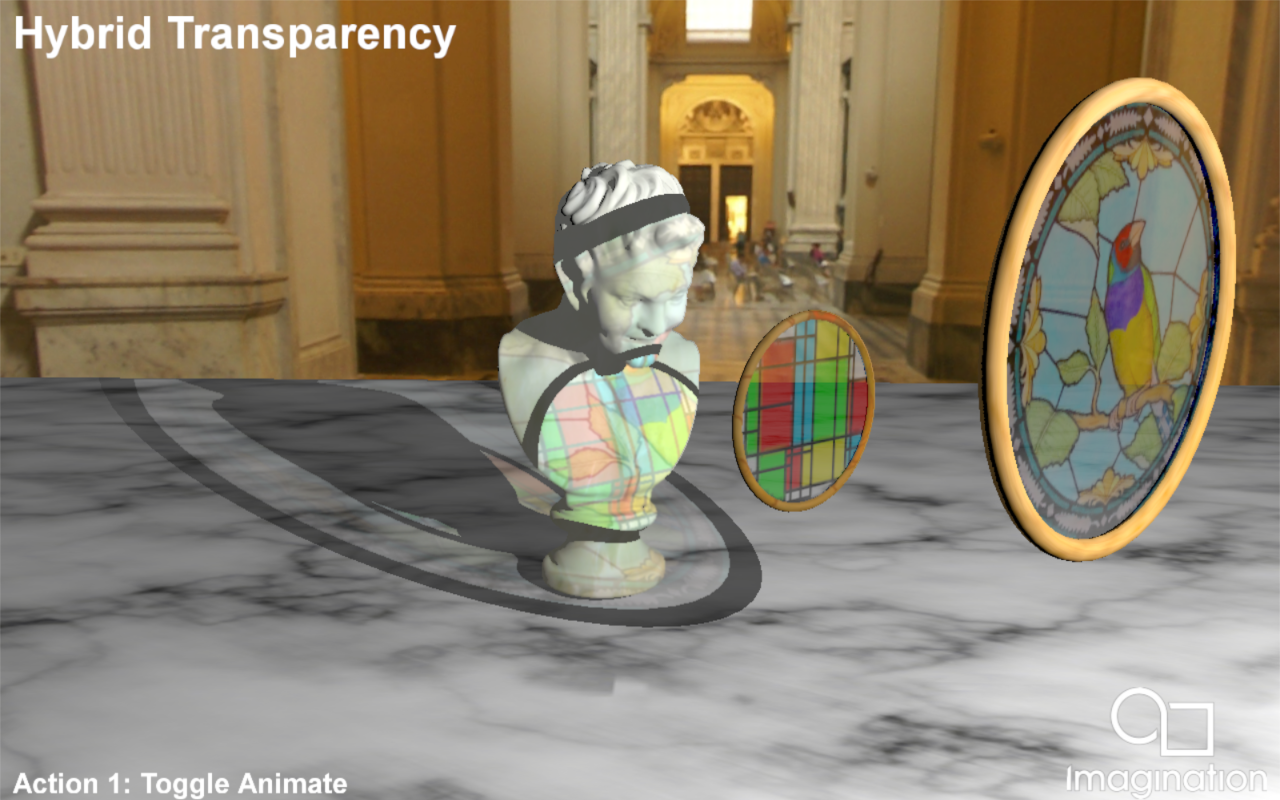- 28 June 2022
- Benjamin Anuworakarn
Hello everyone, and we hope you’ve been having a pleasant 2022 so far. I think we speak for all of us when we suggest that it’s the season of “new and fresh”, and so it only makes sense to offer a new release of the PowerVR SDK and Tools.
Understandably, we’ve got a lot to share this time around, so it’s highly recommended to take a look through our Release Notes to see exactly what has been added or fixed for this release. Or, as always, for those who just want to dive in themselves, the latest version is available for download here:
PowerVR SDK
Besides the regular handful of quality-of-life and bug fixes, we’ve continued to add more examples to our SDK to make it even better for developers to use as a reference. This time, we have two new ray tracing examples: hybrid transparency and denoising. Both of these are fairly interesting and we’d encourage you to check them out. Beyond that, we’ve also added some non-ray tracing demos as well, such as subgroups, YCbCr texture sampling, as well as updating our OpenGL ES shadows example.

It could almost even be said that our SDK team has been the hardest working since the new year began, and we’ve actually been growing it (and are still growing it, so do take a look at our Careers page if you’re interested in contributing) this year, so you can expect a lot more great things in the coming months!
PVRCarbon
We’re doing a staggered release this time, so as of the time of this post being published, PVRCarbon’s 22.1 Release is not yet available for download. Please check back, as we’ll update this post when it is published. PVRCarbon’s release is now also available for download from our downloads page, thanks for your patience!
PVRCarbon has received some major bug fixes, and the time we’ve spent polishing it has not gone to waste. Not only that, but a variety of performance increases should see many more users having a much smoother experience when using PVRCarbon. Beyond this, we’ve expanded PVRCarbon’s ability to record and playback on Windows and Android, resulting in a significantly improved workflow for most users.
Most of the new features come from the PVRCarbon player – we’ve added a whole range of new command-line options which gives users finer control over their recording’s playback, as well as a handful of checks and other behaviours to improve the overall performance. There are a few upgrades to the recorder as well, such as packaging the pvrcbn file when an unhandled exception occurs during recording, as well as overall improved forward compatibility for unrecognised Vulkan-typed structures.
Our journey to make PVRCarbon the best API analysis tool for graphics developers is unending, however, so if there’s anything you’d like to see in the next release, let us know through our contact form!
PVRTexTool
While PVRCarbon is one of our newer tools, one of our most popular mainstay offerings is still PVRTexTool, and we haven’t forgotten it this time either. We’ve got a whole new swathe of improvements to PVRTexLib, our texture manipulation library that should now make it indispensable for any graphics application development process. We’ve added several new texture comparison error metric functions, a new API that allows users to save textures to memory buffer instead of a file, and a new decompression function that provides an easy way to decompress a texture into an appropriate format based on how it was compressed.
The PVRTexTool GUI also has a few shiny new features such as the Pixel Display settings for integer textures, as well as a few UI improvements that allow users to control vertical field-of-view and display pixel values in cube view.
PVRTune
And finally, to round this post out, we have our other major flagship software, PVRTune. Most of PVRTune’s new additions and updates here are mostly quality-of-life, such as automatic reconnection, keyboard shortcuts, and other small improvements to the UI. However, beyond that and the variety of bug fixes and performance improvements, PVRTuneComplete, our enhanced version available, has new abscissa modes for Time, Cycles, and other metrics. These modes allow for viewing the data in different ways, and can help users pinpoint the bottlenecks in their application performance.
That’s it from us this time, and as is tradition, we’ll remind you that you can find out more from our Documentation Website, or get in touch with our support through the Forums or our contact form. And once again, our 22.1 Release of the PowerVR Tools and SDK.






